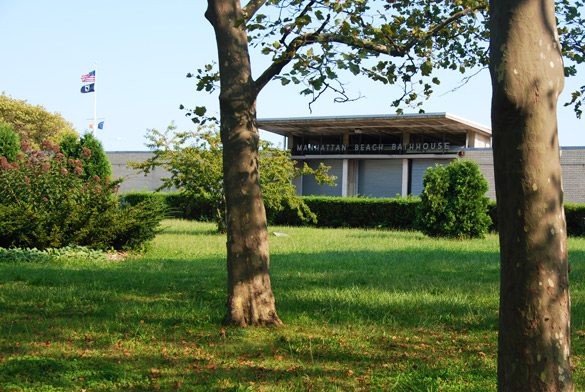Manhattan Beach Community Group Calls Bathhouse Study A Waste Of Money

In a scathing editorial published on their website yesterday, the Manhattan Beach Community Group blasted the Parks Department’s $125,000 feasibility study for the Manhattan Beach bathhouse project as a waste of money, and said Assemblyman Steven Cymbrowitz, who funded the study, is playing politics with its recommendations.
The Parks Department and Assemblyman Cymbrowitz revealed the results of the study last week after three years of interviews and research by Parks architects. The report recommends reactivating the building by turning it into an energy-efficient structure with upgraded Parks Department and NYPD administrative offices, sheltered and external storage space, larger bathrooms for beachgoers, fitness facilities and some solar power. It leaves a 6,500 square foot section for unidentified community use, and the department is soliciting input from the community to give the space purpose.
But the group said that the recommendations of the study need not have come with the price tag. According to President Ira Zalcman, who penned the editorial, the group has touted a proposal for the bathhouse for years, including plans for renovated bathrooms and solar power, and that the costly taxpayer-funded study has not introduced anything new, and to call it “the beginning of a discussion,” as Cymbrowitz did, is behind the times.
“Albany doesn’t get it because they’re busy wasting money. The MBCG disagrees with the Assemblyman. This is not the beginning of a conversation about the Bath House. He’s ten years late for that,” the editorial states.
The group sees the study’s recommendations as a missed opportunity to seize upon their solar proposal, which could have served as a pilot project for similar projects across the city. The editorial states:
Let’s be honest. The MBCG has been pushing very strongly for the Bath House to become the first step on the road to renewable solar energy for our neighborhood. We proposed 900 solar panels and an educational energy center below them for the school aged children of New York City. The energy produced would go directly to a happy Con Edison to relieve pressure on their system. Next, maybe school roofs, nursing home roofs, College roof tops? The plan is for each neighborhood in our growing city to become self reliant on energy. We first proposed this when gas was $2.45 a gallon. It’ll be double that in weeks or months.
Zalcman told Sheepshead Bites that the solar proposal wouldn’t directly benefit Manhattan Beach residents, but all Con Edison customers. The group envisions a successful pilot program that would spur similar projects atop public schools, libraries and municipal buildings across the city.
Assemblyman Cymbrowitz, however, rejected claims that the study was a waste, and said that a solar center the scale MBCG wants isn’t possible. He issued the following statement to Sheepshead Bites:
I find it disingenuous that when the Manhattan Beach Community Group’s Ira Zalcman was interviewed for this feasibility study he did not find it to be a waste of money as long as solar panels were included. The Manhattan Beach Community Group and my office worked with Con Edison to explore the feasibility of installing solar panels and found that it would not be practical because the roof area was too small to provide power to all of Manhattan Beach. However, the study does incorporate Mr. Zalcman’s solar energy proposal to provide the electricity needed for the operation of the proposed building.
Zalcman, though, said Cymbrowitz is passing on the solar idea in favor of an “immigrant center,” which Cymbrowitz described at last week’s announcement as a cultural community center that would serve as an exhibition space for the district’s various ethnicities to produce culturally-sensitive programming documenting their cultures. Zalcman said it was a matter of attracting votes, not providing for the community’s needs.
“No one wants an immigrant center except it’s an election year and the votes of immigrants seem to be important,” Zalcman wrote. “The Bath House is made of bricks and mortar. It’s 110,000 square feet of space that can be put to use in many ways far better than an immigrant center.”
Regardless of which idea wins broader community support – cultural center or solar plant, or something entirely different – there remains no funding to do any construction at the site.




